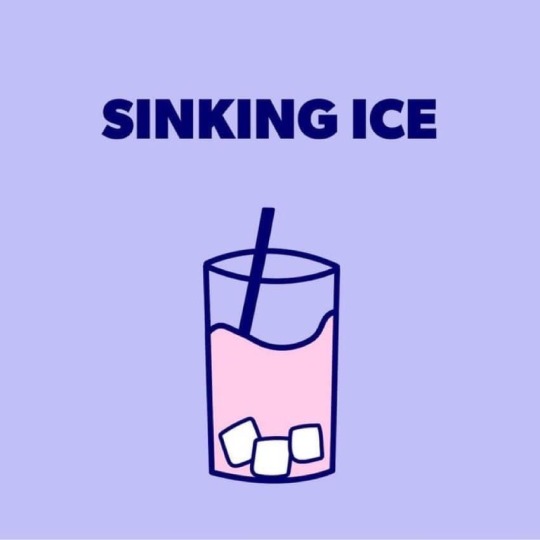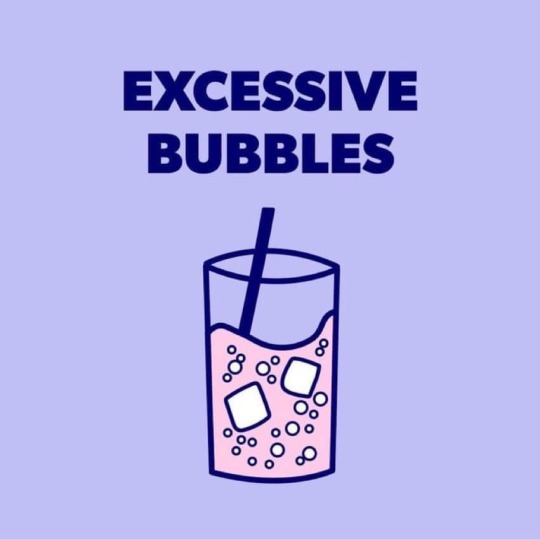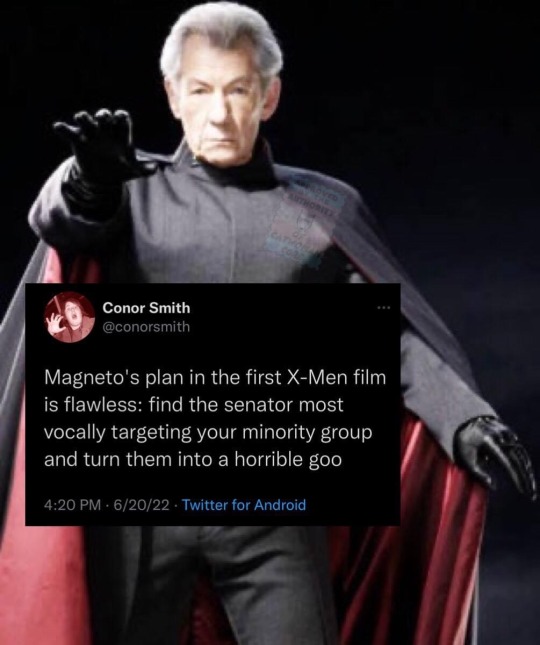Text

You might know this tiny frog.
This is Mini mum (photo by Andolalao Rakotoarison), a species I had the pleasure to name—together with a team of amazing colleagues—back in 2019.
That was the start of a fascination with the process and consequences of miniaturisation for vertebrates. How the hell does this tiny frog manage to fit all of its vital organs—more or less all the same senses and organs that we have—into a package the size of a tic-tac‽ Why and how has it evolved to be so small? And why don't we get frogs that are much smaller?
Well, I just secured 1.5 MILLION Euros (!!!) in the form of a European Research Commission Starting Grant, to answer these and other related questions in the genomes of Mini frogs and other miniaturised vertebrates.
Because it turns out, there are *lots* of miniaturised vertebrates, and they push the boundaries of how small we think it is possible for a vertebrate to be! Here is a little graphic of some of them, scaled to a BIC ballpoint pen.
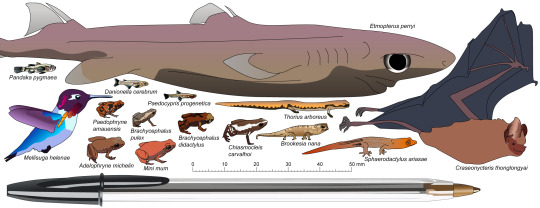
The project is called GEMINI: The Genomics of Miniaturisation in Vertebrates! You can read more about it on my website here, and in the press release, here!

6K notes
·
View notes
Text
"In drought-stricken areas, communities facing water shortages, or even in residential and commercial buildings eager to improve their environmental footprints, atmospheric water generators represent a new frontier in water production.
While it might sound like a tidbit from a science fiction movie, even the driest places on earth have moisture in the air that can be extracted and used for everyday necessities like plumbing and drinking.
Unlike traditional dehumidifiers, which also pull moisture from the air, AWGs utilize filtration and sterilization technology to make water safe to drink.
And while there are plenty of AWG companies out there — and the science itself isn’t novel — AWGs are becoming more efficient, affordable, and revolutionary in combating water scarcity in a myriad of communities.
Aquaria Technologies, a San Francisco-based AWG startup, was founded in 2022 to help provide affordable and clean drinking water in areas most affected by climate change.
Using heat exchange and condensation, Aquaria’s generators draw air into their systems, cool that air below its dew point, and as it condenses, capture that water and filter it for consumption.
As the cycle continues, the generator’s refrigerant vaporizes and goes through a process that cools it back into a liquid, meaning the heat transfer cycle repeats continuously in an energy-efficient and self-sustaining system.
“I’m sure you’ve had the experience in the summer, you take a glass of a cold drink out of the fridge and then water droplets form on the side of the bottle,” Aquaria’s co-founder and CEO Brian Sheng, said in a podcast episode. “That’s actually condensation.”
Sheng continued: “The question is, how do we create condensation? How do we extract water out of the air in large volume and using little energy? That’s what our technology does. We have created both active and passive cooling methods where we use special materials, and we’ve created heat exchange and recovery systems and airflow design, such that we’re maximizing heat exchange, and then we’re able to extract large volumes of water.”
Aquaria has created a number of generators, but its stand-alone model — the Hydropack X — can replace an entire home’s dependence on municipal water, producing as much as 264 gallons of potable water per day.
Other models, like the Hydrostation, can provide water for up to 1,500 people at parks, construction sites, or other outdoor public areas. The Hydropixel can make 24 gallons of water per day for a seamless at-home application, requiring a simple outlet for power.
“Atmospheric water generators present a groundbreaking solution to the global challenge of clean water scarcity, leveraging the humidity present in the air to produce potable water,” the company’s website explains.
“This technology is versatile, functioning efficiently across diverse climates — from arid regions to tropical settings. From rural communities in developing countries to advanced cities facing unexpected droughts, atmospheric water generators have a wide range of applications… transforming lives and providing secure, clean water sources.”
Considering an estimated 2.2 billion people lack access to clean water globally — including in American cities like Flint, Michigan, or Modesto, California — innovative solutions like AWGs are vital to maintaining the basic human right to clean water.
The World Economic Forum has begun to dip its toes into this technology as well, implementing public and private partnerships to introduce AWG units in Arizona’s Navajo Nation, where the machines produce about 200 gallons of clean water per day.
“When combined with an appropriate level of community engagement and triple-bottom-line business (people, planet, profit),” a blog post for WE Forum said, “this model can be a powerful stopgap solution where few exist today.”
Similarly, according to New Atlas, Aquaria has a partnership with developers to supply its technology to a 1,000-home community in Hawaii later this year, relying entirely on atmospherically generated water.
The company also has a “Frontier Access Program,” which partners with water-related NGOs, community project developers, and sustainable development groups to deploy this technology in areas most in need.
Regardless of their use cases — in homes, in communities facing water shortages, or at aid sites navigating natural disasters — AWGs have a minimal environmental impact. Sourcing water “from thin air,” requires no plastic bottles, no large-scale plants using up loads of energy, and no byproducts that can harm the environment."
-via GoodGoodGood, August 27, 2024
478 notes
·
View notes
Text
"In China, a landscape architect is reimagining cities across the vast country by working with nature to combat flooding through the ‘sponge city’ concept.
Through his architecture firm Turenscape, Yu has created hundreds of projects in dozens of cities using native plants, dirt, and clever planning to absorb excess rainwater and channel it away from densely populated areas.
Flooding, especially in the two Chinese heartlands of the commercial south and the agricultural north, is becoming increasingly common, but Yu says that concrete and pipe solutions can only go so far. They’re inflexible, expensive, and require constant maintenance. According to a 2021 World Bank report, 641 of China’s 654 largest cities face regular flooding.
“There’s a misconception that if we can build a flood wall higher and higher, or if we build the dams higher and stronger, we can protect a city from flooding,” Yu told CNN in a video call. “(We think) we can control the water… that is a mistake.”
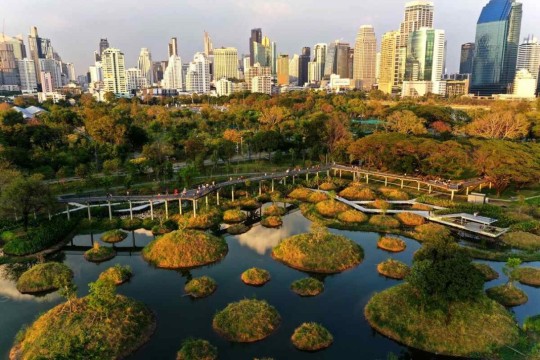
Pictured: The Benjakitti Forest Park in Bangkok
Yu has been called the “Chinese Olmstead” referring to Frederick Law Olmstead, the designer of NYC’s Central Park. He grew up in a little farming village of 500 people in Zhejiang Province, where 36 weirs channel the waters of a creek across terraced rice paddies.
Once a year, carp would migrate upstream and Yu always looked forward to seeing them leap over the weirs.
This synthesis of man and nature is something that Turenscape projects encapsulate. These include The Nanchang Fish Tail Park, in China’s Jiangxi province, Red Ribbon Park in Qinghuandao, Hebei province, the Sanya Mangrove Park in China’s island province of Hainan, and almost a thousand others. In all cases, Yu utilizes native plants that don’t need any care to develop extremely spongey ground that absorbs excess rainfall.
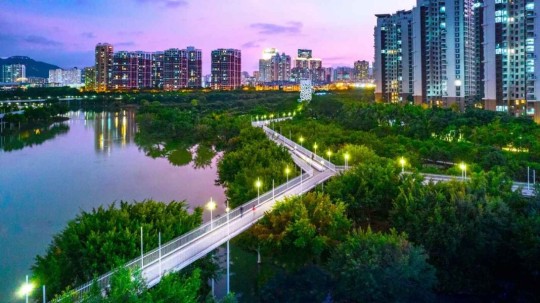
Pictured: The Dong’an Wetland Park, another Turescape project in Sanya.
He often builds sponge projects on top of polluted or abandoned areas, giving his work an aspect of reclamation. The Nanchang Fish Tail Park for example was built across a 124-acre polluted former fish farm and coal ash dump site. Small islands with dawn redwoods and two types of cypress attract local wildlife to the metropolis of 6 million people.
Sanya Mangrove Park was built over an old concrete sea wall, a barren fish farm, and a nearby brownfield site to create a ‘living’ sea wall.
One hectare (2.47 acres) of Turenscape sponge land can naturally clean 800 tons of polluted water to the point that it is safe enough to swim in, and as a result, many of the sponge projects have become extremely popular with locals.
One of the reasons Yu likes these ideas over grand infrastructure projects is that they are flexible and can be deployed as needed to specific areas, creating a web of rain sponges. If a large drainage, dam, seawall, or canal is built in the wrong place, it represents a huge waste of time and money.

Pictured: A walkway leads visitors through the Nanchang Fish Tail Park.
The sponge city projects in Wuhan created by Turenscape and others cost in total around half a billion dollars less than proposed concrete ideas. Now there are over 300 sponge projects in Wuhan, including urban gardens, parks, and green spaces, all of which divert water into artificial lakes and ponds or capture it in soil which is then released more slowly into the sewer system.
Last year, The Cultural Landscape Foundation awarded Yu the $100,000 Oberlander Prize for elevating the role of design in the process of creating nature-based solutions for the public’s enjoyment and benefit."
-via Good News Network, August 15, 2024
486 notes
·
View notes
Text
"Doctors have begun trialling the world’s first mRNA lung cancer vaccine in patients, as experts hailed its “groundbreaking” potential to save thousands of lives.
Lung cancer is the world’s leading cause of cancer death, accounting for about 1.8m deaths every year. Survival rates in those with advanced forms of the disease, where tumours have spread, are particularly poor.
Now experts are testing a new jab that instructs the body to hunt down and kill cancer cells – then prevents them ever coming back. Known as BNT116 and made by BioNTech, the vaccine is designed to treat non-small cell lung cancer (NSCLC), the most common form of the disease.
The phase 1 clinical trial, the first human study of BNT116, has launched across 34 research sites in seven countries: the UK, US, Germany, Hungary, Poland, Spain and Turkey.
The UK has six sites, located in England and Wales, with the first UK patient to receive the vaccine having their initial dose on Tuesday [August 20, 2024].
Overall, about 130 patients – from early-stage before surgery or radiotherapy, to late-stage disease or recurrent cancer – will be enrolled to have the jab alongside immunotherapy. About 20 will be from the UK.
The jab uses messenger RNA (mRNA), similar to Covid-19 vaccines, and works by presenting the immune system with tumour markers from NSCLC to prime the body to fight cancer cells expressing these markers.
The aim is to strengthen a person’s immune response to cancer while leaving healthy cells untouched, unlike chemotherapy.
“We are now entering this very exciting new era of mRNA-based immunotherapy clinical trials to investigate the treatment of lung cancer,” said Prof Siow Ming Lee, a consultant medical oncologist at University College London hospitals NHS foundation trust (UCLH), which is leading the trial in the UK.
“It’s simple to deliver, and you can select specific antigens in the cancer cell, and then you target them. This technology is the next big phase of cancer treatment.”
Janusz Racz, 67, from London, was the first person to have the vaccine in the UK. He was diagnosed in May and soon after started chemotherapy and radiotherapy.
The scientist, who specialises in AI, said his profession inspired him to take part in the trial. “I am a scientist too, and I understand that the progress of science – especially in medicine – lies in people agreeing to be involved in such investigations,” he said...
“And also, I can be a part of the team that can provide proof of concept for this new methodology, and the faster it would be implemented across the world, more people will be saved.”
Racz received six consecutive injections five minutes apart over 30 minutes at the National Institute for Health Research UCLH Clinical Research Facility on Tuesday.
Each jab contained different RNA strands. He will get the vaccine every week for six consecutive weeks, and then every three weeks for 54 weeks.
Lee said: “We hope adding this additional treatment will stop the cancer coming back because a lot of time for lung cancer patients, even after surgery and radiation, it does come back.” ...
“We hope to go on to phase 2, phase 3, and then hope it becomes standard of care worldwide and saves lots of lung cancer patients.”
The Guardian revealed in May that thousands of patients in England were to be fast-tracked into groundbreaking trials of cancer vaccines in a revolutionary world-first NHS “matchmaking” scheme to save lives.
Under the scheme, patients who meet the eligibility criteria will gain access to clinical trials for the vaccines that experts say represent a new dawn in cancer treatment."
-via The Guardian, May 30, 2024
544 notes
·
View notes
Text

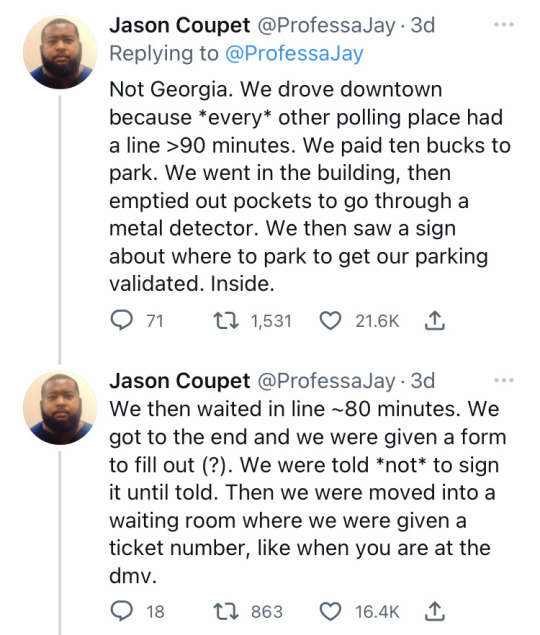
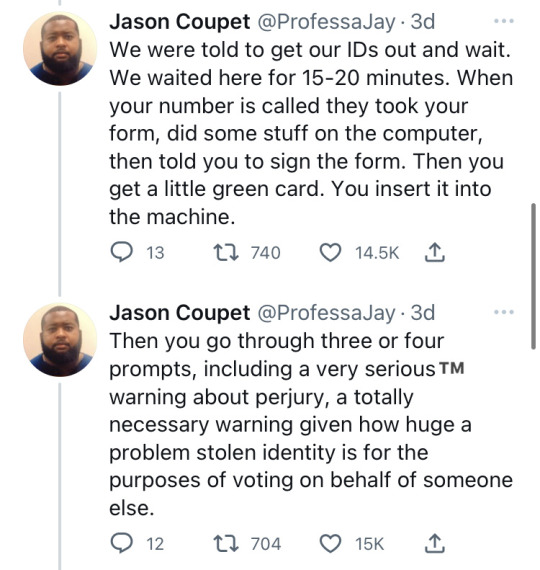

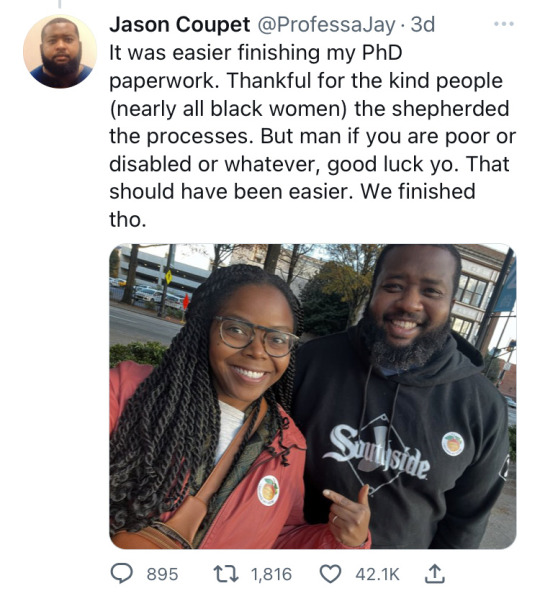
[Image ID: A series of screenshots from a Twitter thread by Jason Coupet / professajay.
Text begins: Man voting in Georgia is so different than in Illinois. When I lived in chicago, during early voting, I went to the local elementary school, waited in line about ten minutes, and they gave me a sheet of paper. I checked people off then I put it in the machine and left.
Not Georgia. We drove downtown because *every* other polling place had a line >90 minutes. We paid ten bucks to park. We went in the building, then emptied out pockets to go through a metal detector. We then saw a sign about where to park to get our parking validated. Inside.
We then waited in line ~80 minutes. We got to the end and we were given a form to fill out (?). We were told *not* to sign it until told. Then we were moved into a waiting room where we were given a ticket number, like when you are at the dmv.
We were told to get our IDs out and wait. We waited here for 15-20 minutes. When your number is called they took your form, did some stuff on the computer, then told you to sign the form. Then you get a little green card. You insert it into the machine.
Then you go through three or four prompts, including a very serious™️ warning about perjury, a totally necessary warning given how huge a problem stolen identity is for the purposes of voting on behalf of someone else.
You then finally vote, and after an “are you sure” prompt you get a sheet. You then have to walk the sheet over to feed it into a machine. About half of these were working.
The bottleneck was clearly the weird application and waiting room thing. There are two dozen people at a time sitting to have their stuffed checked. Think of it as regular voting except when you got there they had to run a credit check for *each person* like you need financing.
It was easier finishing my PhD paperwork. Thankful for the kind people (nearly all black women) the shepherded the processes. But man if you are poor or disabled or whatever, good luck yo. That should have been easier. We finished tho. Text ends.
Image ID: Two Black people are standing beside a city street and smiling at the camera, a man and a woman. The man has close-cropped hair and a beard. He is wearing a black hoodie that says Southside and has a sticker on his chest with a peach on it. The woman has large tortoiseshell browline glasses and long twist locs. She has a light brown leather crossbody bag, and is wearing a salmon-colored windbreaker. She also has a peach sticker on her chest, which she is pointing to. Her hand has a wedding ring. End ID]
14K notes
·
View notes
Text
13K notes
·
View notes
Text
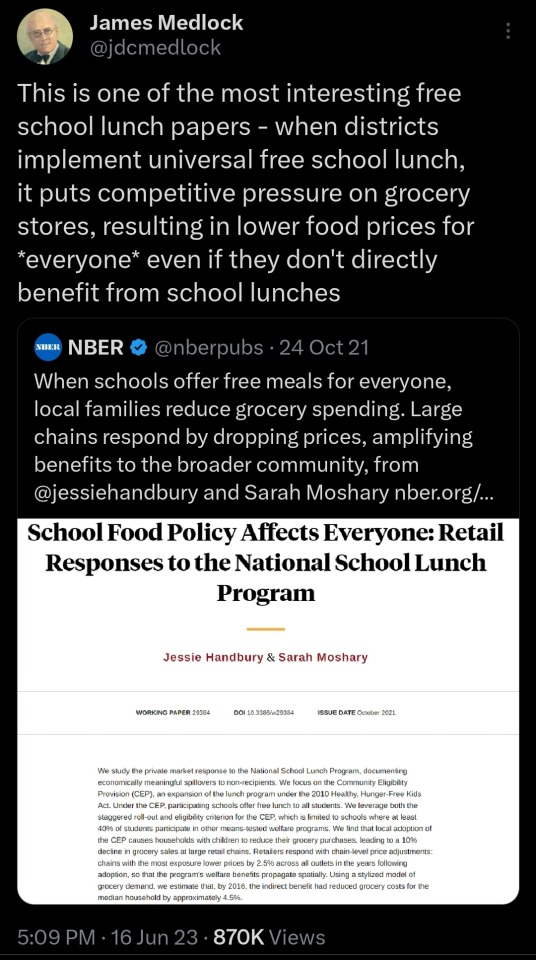
When schools offer free meals for everyone, local families reduce grocery spending. Large chains respond by dropping prices, amplifying benefits to the broader community.
Education and nutrition depend on each other.
36K notes
·
View notes
Text

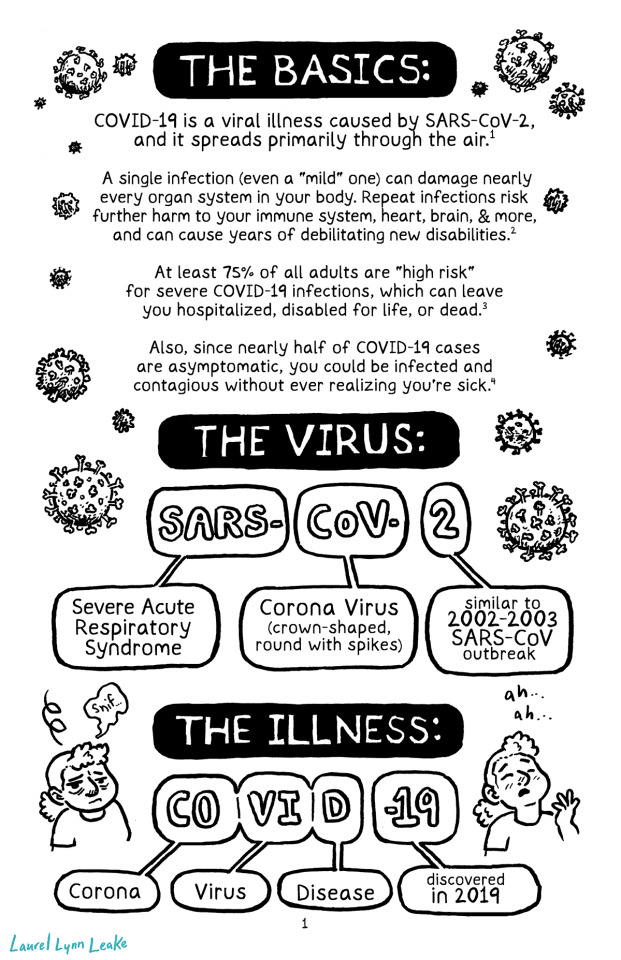


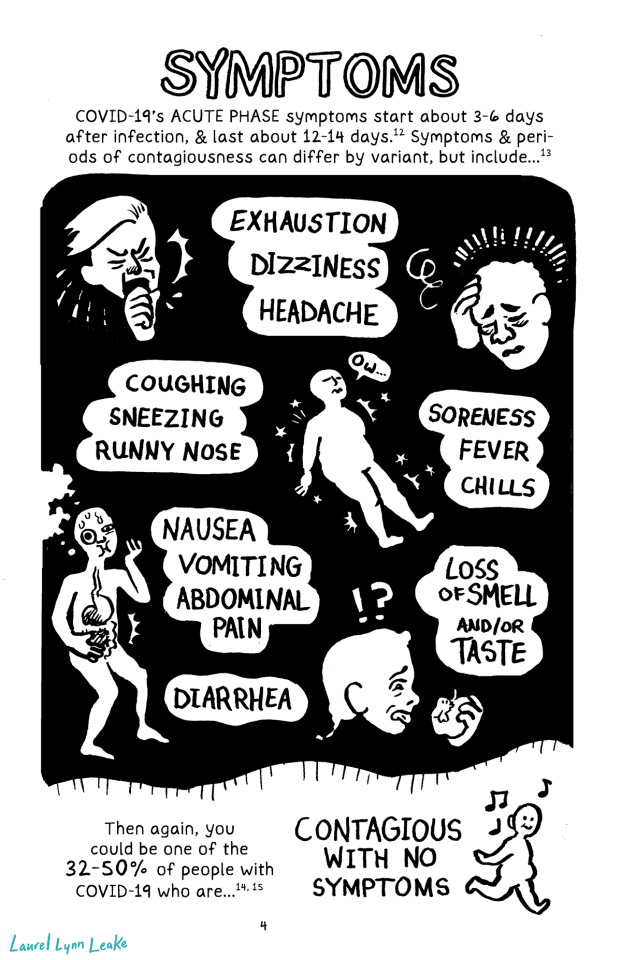

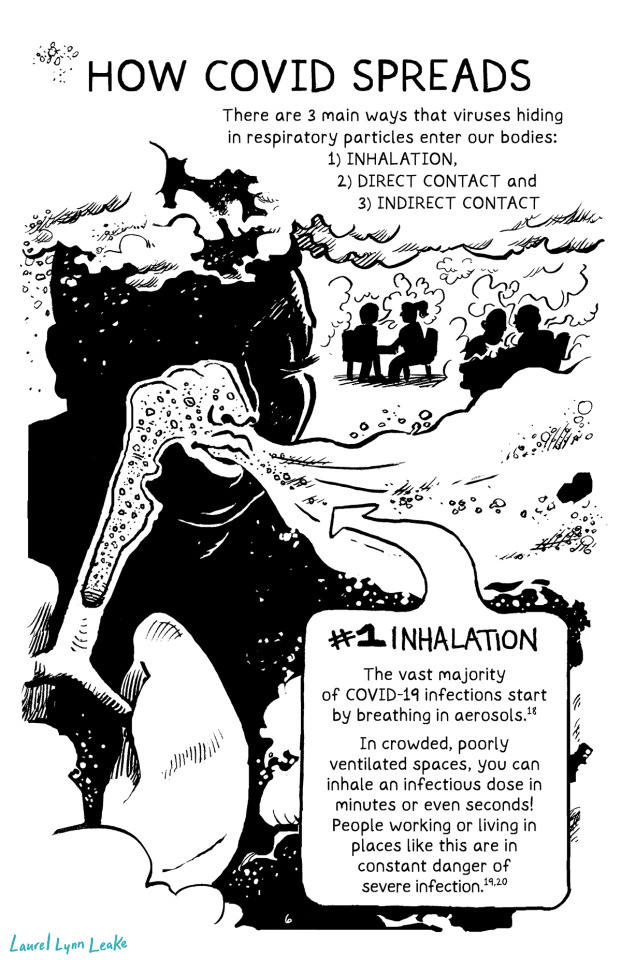


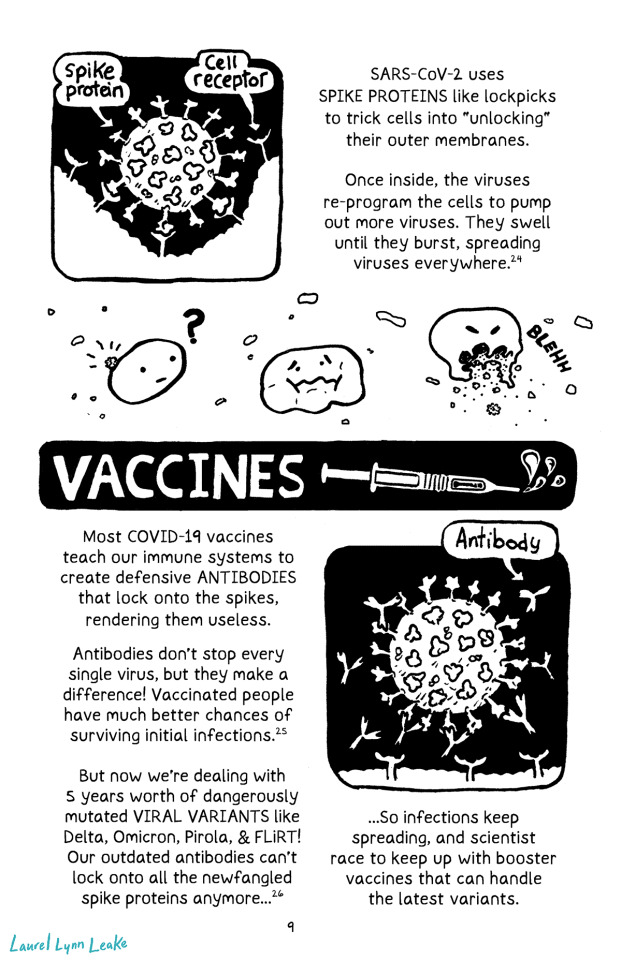





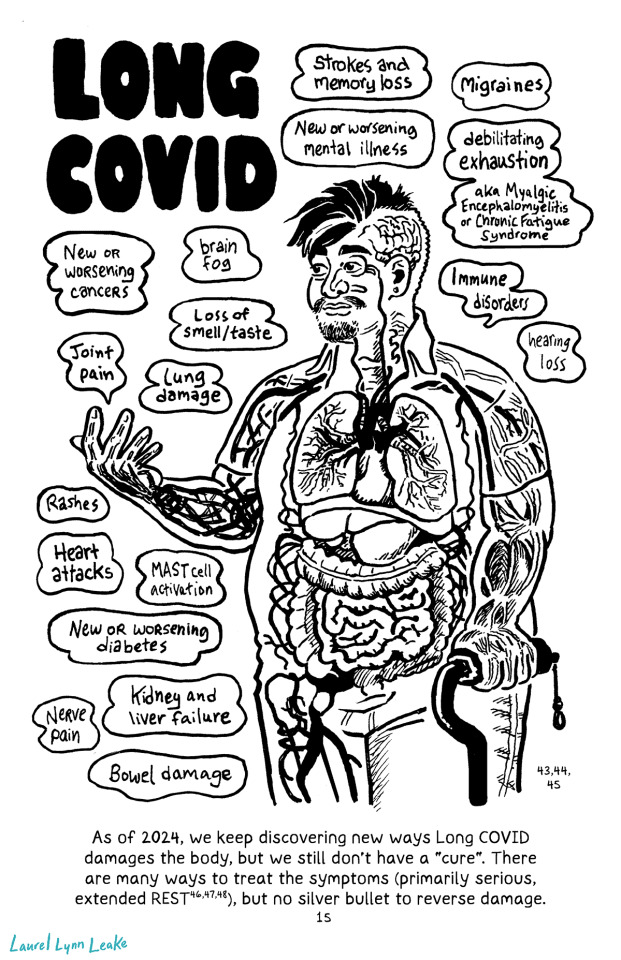

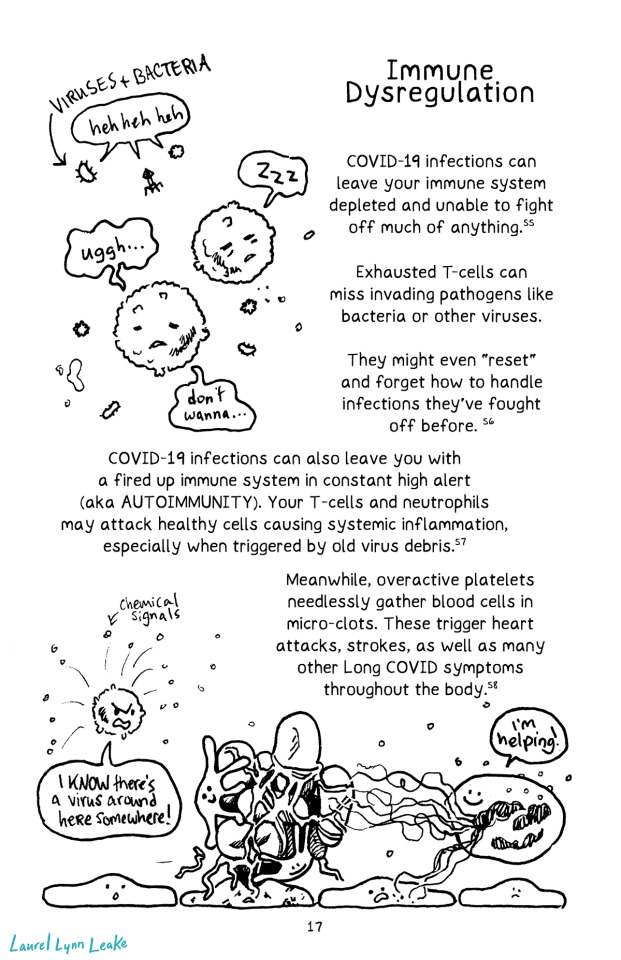

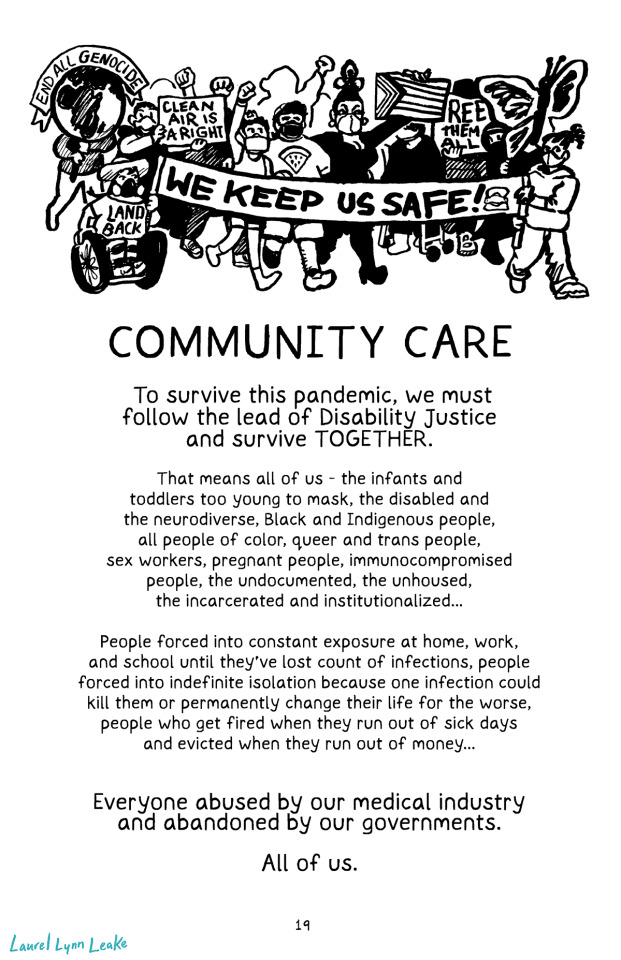

WHY WE MASK: It's Not "Just A Cold": A Handy Scientific Guide to Surviving COVID-19 Together
Here, have a free science zine with a ridiculously long title! Endless thanks to my partner and fellow disabled artist, Kimball Anderson aka @earnestattempts, who helped through the entire year-long process with art edits and image descriptions (located in the alt text). Additional thanks to my friends Dupe and Caitlin, who gave me thorough copy-edits, and every friend who read drafts or listened to me rant about COVID-19.
Feel free to spread it far and wide! And hit me up if you're interested in printing &/or distributing free copies :D
Read WHY WE MASK with Endnotes - includes working URLS so you can read the scientific papers I cited for yourself. Plus links for all the other resources, and a full transcript.
Download WHY WE MASK - Free PDFs to read, print, and share! Any donations go towards print copies &/or local mask blocs.
Can't get enough free printable COVID zines? Check out @newlevant's excellent What's Up With COVID & How To Protect Yourself: 2024 Ed! It was a huge inspiration in the final stretch.
Extra pages under the cut:
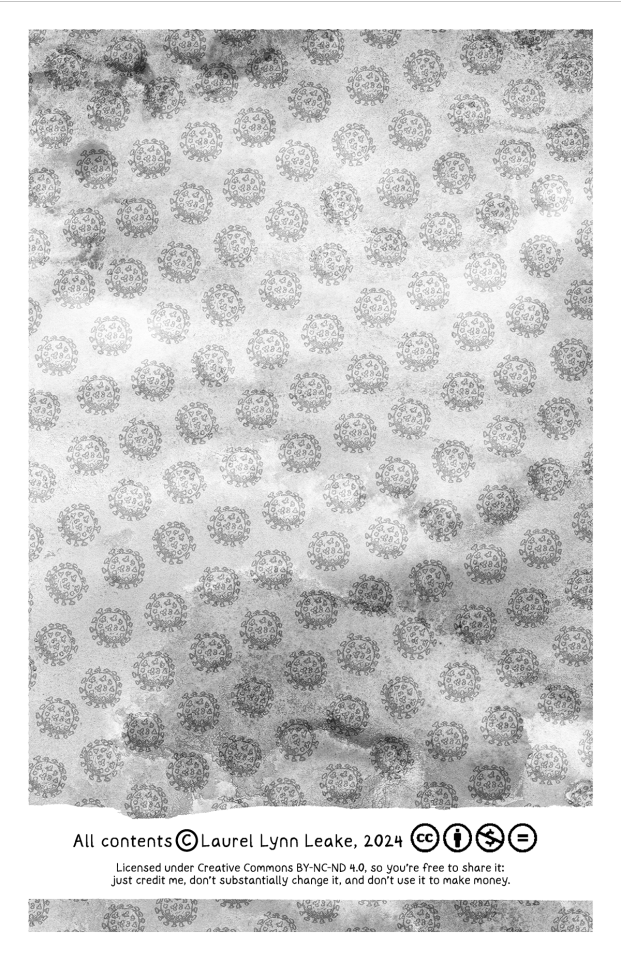
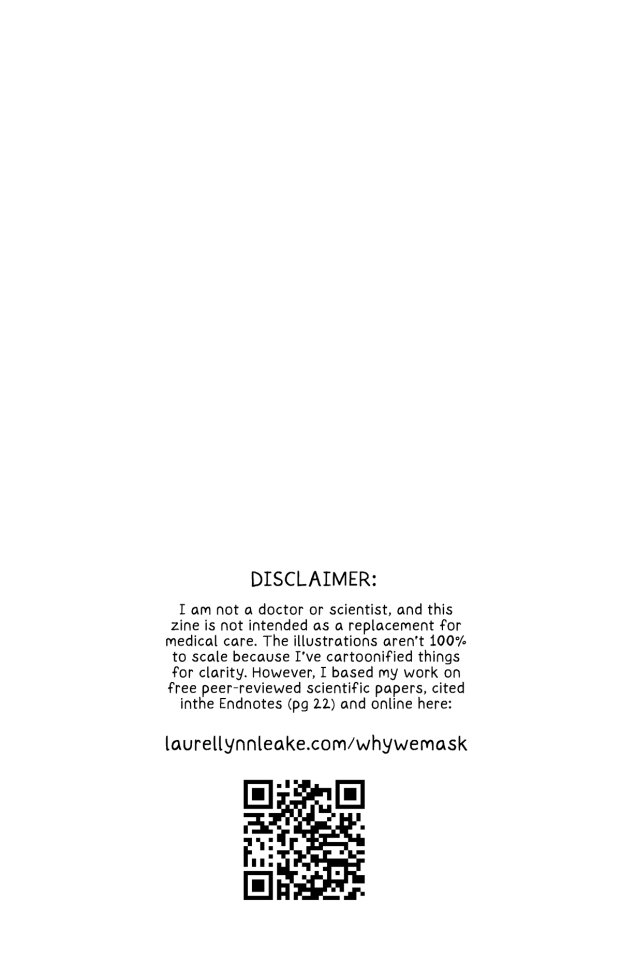

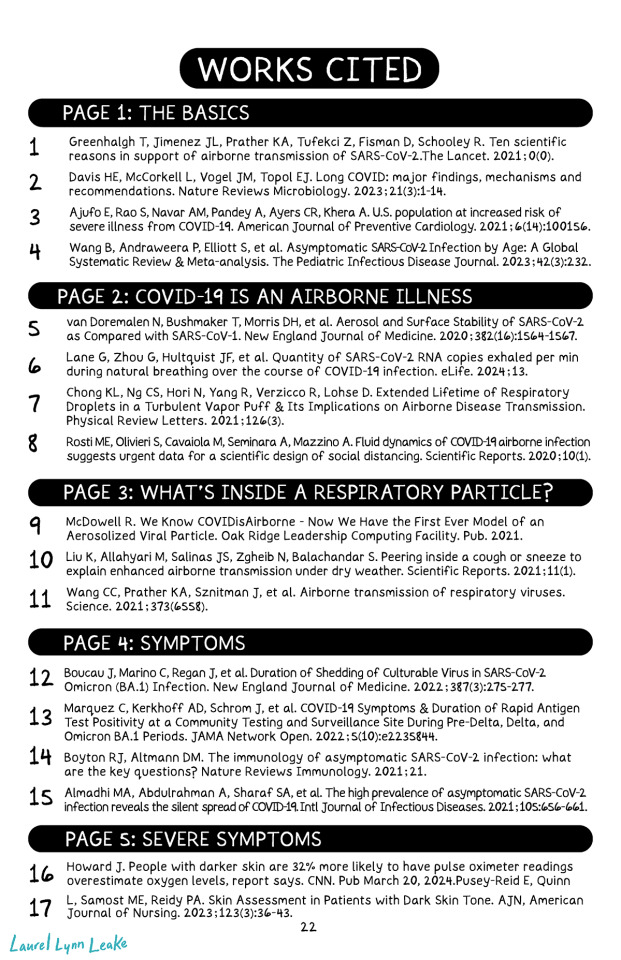



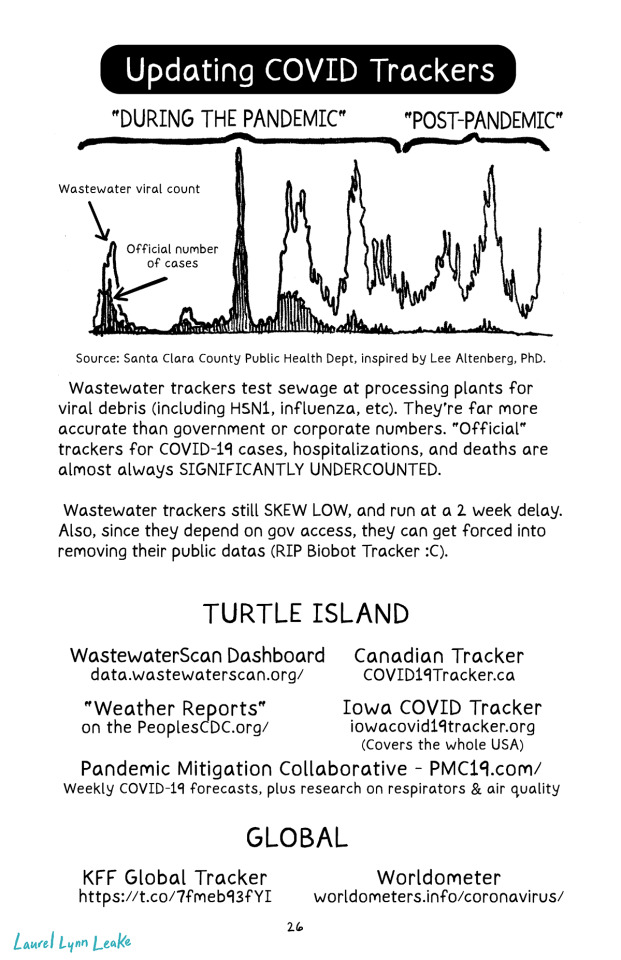
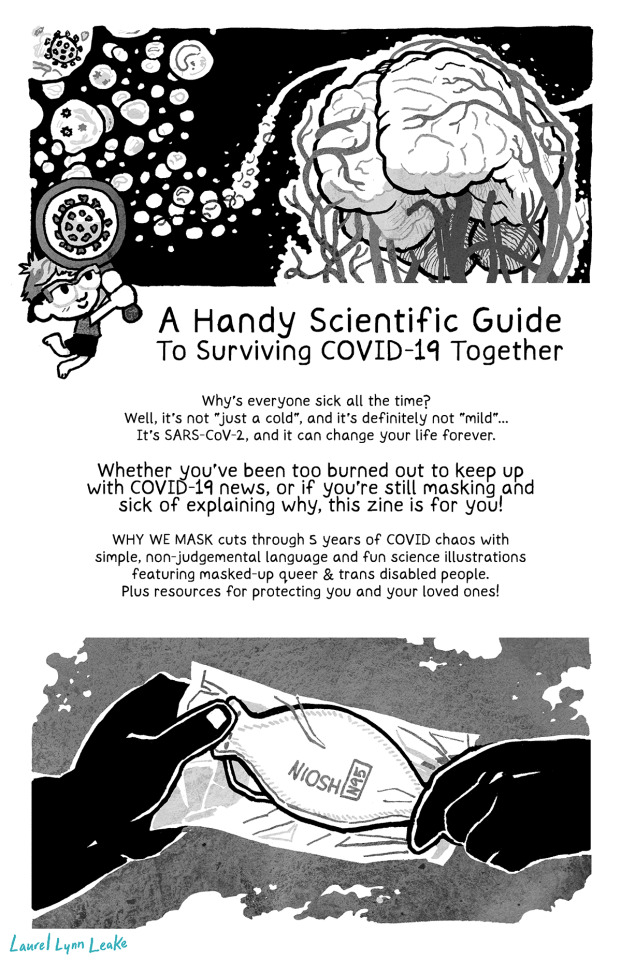
5K notes
·
View notes
Text
Master doc that contains different resources and support for many countries including Palestine, Congo, Haiti, Hawai’i, etc ((the creator is underneath the link))

Link to the tweet: https://x.com/seaweedlagoon/status/1772449954046279818?s=46&t=s8SsfXh2OjpNRAj1OBxwqg
59K notes
·
View notes
Text
Opinion Here’s how to get free Paxlovid as many times as you need it
When the public health emergency around covid-19 ended, vaccines and treatments became commercial products, meaning companies could charge for them as they do other pharmaceuticals. Paxlovid, the highly effective antiviral pill that can prevent covid from becoming severe, now has a list price of nearly $1,400 for a five-day treatment course.
Thanks to an innovative agreement between the Biden administration and the drug’s manufacturer, Pfizer, Americans can still access the medication free or at very low cost through a program called Paxcess. The problem is that too few people — including pharmacists — are aware of it.
I learned of Paxcess only after readers wrote that pharmacies were charging them hundreds of dollars — or even the full list price — to fill their Paxlovid prescription. This shouldn’t be happening. A representative from Pfizer, which runs the program, explained to me that patients on Medicare and Medicaid or who are uninsured should get free Paxlovid. They need to sign up by going to paxlovid.iassist.com or by calling 877-219-7225. “We wanted to make enrollment as easy and as quick as possible,” the representative said.
Indeed, the process is straightforward. I clicked through the web form myself, and there are only three sets of information required. Patients first enter their name, date of birth and address. They then input their prescriber’s name and address and select their insurance type.
All this should take less than five minutes and can be done at home or at the pharmacy. A physician or pharmacist can fill it out on behalf of the patient, too. Importantly, this form does not ask for medical history, proof of a positive coronavirus test, income verification, citizenship status or other potentially sensitive and time-consuming information.
But there is one key requirement people need to be aware of: Patients must have a prescription for Paxlovid to start the enrollment process. It is not possible to pre-enroll. (Though, in a sense, people on Medicare or Medicaid are already pre-enrolled.)
Once the questionnaire is complete, the website generates a voucher within seconds. People can print it or email it themselves, and then they can exchange it for a free course of Paxlovid at most pharmacies.
Pfizer’s representative tells me that more than 57,000 pharmacies are contracted to participate in this program, including major chain drugstores such as CVS and Walgreens and large retail chains such as Walmart, Kroger and Costco. For those unable to go in person, a mail-order option is available, too.
The program works a little differently for patients with commercial insurance. Some insurance plans already cover Paxlovid without a co-pay. Anyone who is told there will be a charge should sign up for Paxcess, which would further bring down their co-pay and might even cover the entire cost.
Several readers have attested that Paxcess’s process was fast and seamless. I was also glad to learn that there is basically no limit to the number of times someone could use it. A person who contracts the coronavirus three times in a year could access Paxlovid free or at low cost each time.
Unfortunately, readers informed me of one major glitch: Though the Paxcess voucher is honored when presented, some pharmacies are not offering the program proactively. As a result, many patients are still being charged high co-pays even if they could have gotten the medication at no cost.
This is incredibly frustrating. However, after interviewing multiple people involved in the process, including representatives of major pharmacy chains and Biden administration officials, I believe everyone is sincere in trying to make things right. As we saw in the early days of the coronavirus vaccine rollout, it’s hard to get a new program off the ground. Policies that look good on paper run into multiple barriers during implementation.
Those involved are actively identifying and addressing these problems. For instance, a Walgreens representative explained to me that in addition to educating pharmacists and pharmacy techs about the program, the company learned it also had to make system changes to account for a different workflow. Normally, when pharmacists process a prescription, they inform patients of the co-pay and dispense the medication. But with Paxlovid, the system needs to stop them if there is a co-pay, so they can prompt patients to sign up for Paxcess.
Here is where patients and consumers must take a proactive role. That might not feel fair; after all, if someone is ill, people expect that the system will work to help them. But that’s not our reality. While pharmacies work to fix their system glitches, patients need to be their own best advocates. That means signing up for Paxcess as soon as they receive a Paxlovid prescription and helping spread the word so that others can get the antiviral at little or no cost, too.
{source}
21K notes
·
View notes

